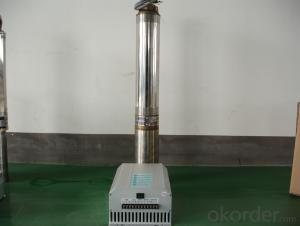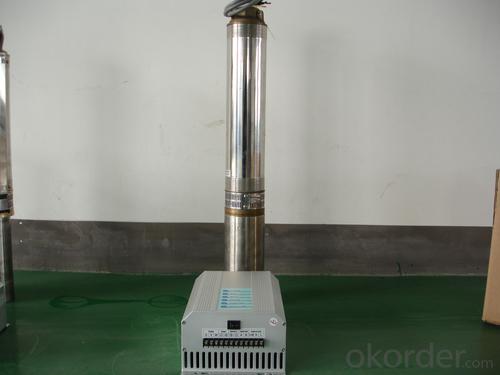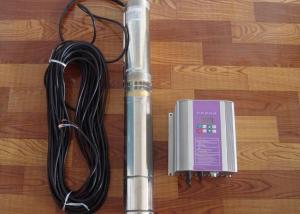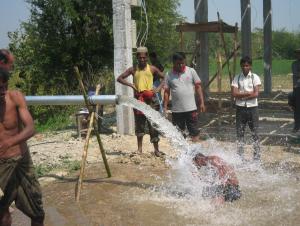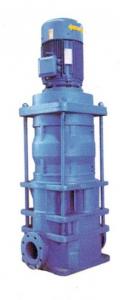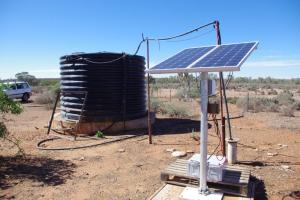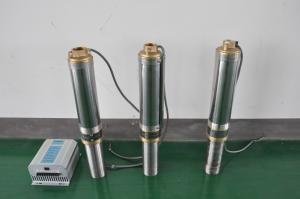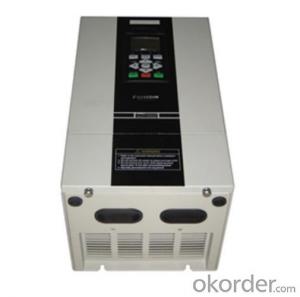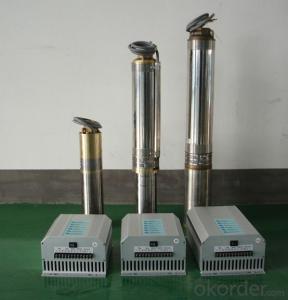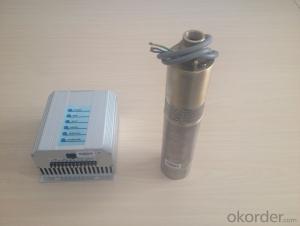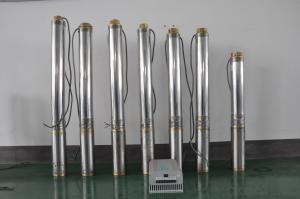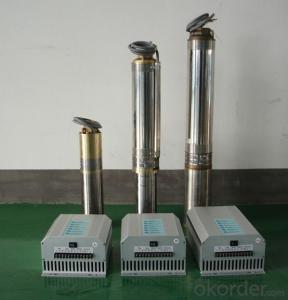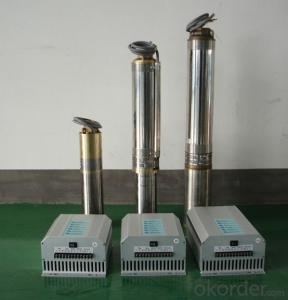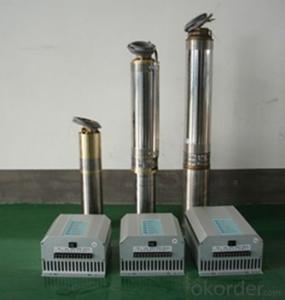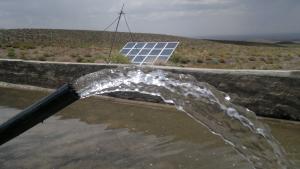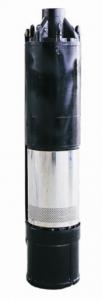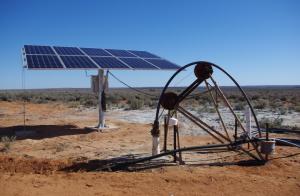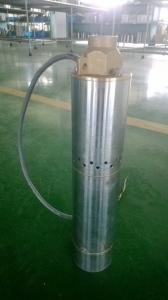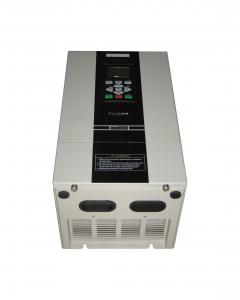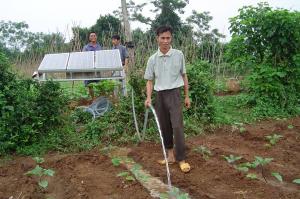Wilo Solar Pump - DC Submersible Solar Water Pump
- Loading Port:
- China Main Port
- Payment Terms:
- TT OR LC
- Min Order Qty:
- -
- Supply Capability:
- -
OKorder Service Pledge
OKorder Financial Service
You Might Also Like
Item Description :
This superb new addition to our solar fountain range comes with a 10w solar panel,and a powerful fountain pump that is capable of producing fountains of up to 2m in height. As well as being easy to set up and use.Instruction manual is supplied for assembly and maintenance.
Solar Fountain Key Features :
Powered by direct sunlight
No high voltage electric mains required
Safe for children
Max. height of fountain: 2M
Max. flow capacity: 800 L/H(176 GAL)
10W Polycrystalline solar panel included
18V DC brushless pump
Solar Pump Features :
Can produce fountains up to : 2M (tube height) 1.4M (fountain height)
Comes with multiple nozzle accessories
Cable Length : 5M
Solar Panel Features :
10W peak power.
Polycrystalline highly efficient solar panel
Comes mounted in aluminium frame
Comes with ground stake and rotating knob so you can angle your panel toward the sun
What You Will Get :
10W solar panel
Solar pump
Ground Sake
Nozzle accessories
Precautions :
DO NOT alter or change the product itself or its components
Operate pump in freshwater only, never above 50 degrees celsius
Keep away from flammable liquids
Do not connect to any other power supply other than the included
- Q: Booster pump installed in the solar water heater, the correct location should be where the solar water heater?
- Tip: Now most of the solar energy for the water-type solar, water need to consider the problem of booster pump, bring a lot of trouble;
- Q: How does the angle and orientation of solar panels affect the performance of a solar pump?
- The performance of a solar pump is greatly affected by the angle and orientation of the solar panels. The angle determines the amount of sunlight received, while the orientation dictates the direction the panels face. Efficiency of solar panels is determined by the angle at which they are installed, as this affects the amount of sunlight they can capture. Sunlight is converted into electricity by solar panels, and the tilt angle determines the quantity of sunlight captured. The optimal angle is dependent on the geographical location of the solar pump. For example, regions near the equator benefit from a flat or low tilt angle to maximize sun exposure year-round. Conversely, higher latitudes require a steeper tilt angle to compensate for lower sunlight intensity. Orientation refers to the direction solar panels face, usually either south or north depending on the hemisphere. In the Northern Hemisphere, south-facing panels capture the maximum sunlight. By facing south, panels receive sunlight for the longest duration during the day. Similarly, in the Southern Hemisphere, north-facing panels provide optimal performance. The angle and orientation of solar panels also influence the angle of incidence, which is the angle at which sunlight strikes the panel surface. Maximum efficiency is achieved when sunlight strikes the panels perpendicularly. If the angle of incidence is too high or low, panel efficiency decreases. Adjusting the tilt angle and orientation optimizes the angle of incidence, maximizing energy output from the solar pump. In conclusion, the angle and orientation of solar panels are crucial in determining the performance of a solar pump. By adjusting these factors based on the geographical location, it is possible to optimize sunlight capture and maximize the efficiency of the solar pump.
- Q: How does a solar pump handle water with high levels of calcium or magnesium?
- A solar pump can handle water with high levels of calcium or magnesium by using a filtration system. The pump draws water from the source and passes it through a filter that removes impurities, including calcium and magnesium deposits. This ensures that the water pumped by the solar pump is of good quality and suitable for various applications.
- Q: Can a solar pump be used in areas with limited access to financing options for installation or maintenance?
- Yes, a solar pump can be used in areas with limited access to financing options for installation or maintenance. Solar pumps are a cost-effective and sustainable solution for water pumping, as they do not require electricity or fuel costs. They can be installed and maintained by local communities or organizations with minimal technical expertise, reducing the need for expensive professional services. Additionally, solar pumps have a longer lifespan and lower operating costs compared to traditional pumps, making them a viable option even in economically constrained areas.
- Q: How long does it take for a solar pump to start pumping after installation?
- The time it takes for a solar pump to start pumping after installation can vary depending on several factors such as the size of the pump, the efficiency of the solar panels, and the availability of sunlight. However, in most cases, a solar pump should start pumping water within minutes or hours after installation, provided there is sufficient sunlight to power the pump.
- Q: How does a solar pump handle water source contamination from oil spills?
- A solar pump alone does not directly address water source contamination from oil spills. However, it can be used in combination with other technologies or methods to help mitigate the effects of oil spills. For instance, a solar-powered water pump can be employed to extract contaminated water from the source, which can then be treated using appropriate filtration and purification systems to remove the oil and other pollutants. Additionally, solar energy can be used to power advanced monitoring systems that can quickly detect and respond to oil spills, allowing for prompt containment and cleanup efforts.
- Q: How does a solar pump handle water with high levels of total dissolved solids?
- A solar pump can handle water with high levels of total dissolved solids (TDS) by using a combination of filtration systems and regular maintenance. The pump typically includes a pre-filter that removes larger particles and sediments, while a reverse osmosis (RO) system or a multi-stage filtration process can further purify the water by removing dissolved solids. Regular maintenance, including cleaning or replacing filters, is necessary to ensure the pump continues to effectively handle water with high TDS levels.
- Q: Can a solar pump be used for water supply in a desert?
- Yes, a solar pump can be used for water supply in a desert. Solar pumps use solar energy to power the pump and can be an efficient and sustainable solution for water supply in remote and arid areas like deserts, where access to electricity may be limited. These pumps can draw water from underground sources or utilize existing water bodies, helping to meet the water needs of communities, agriculture, or livestock in desert regions.
- Q: Are there any limitations to the size of the water reservoir that a solar pump can fill?
- Yes, there are limitations to the size of the water reservoir that a solar pump can fill. The size of the reservoir is limited by the capacity of the solar pump and the amount of sunlight available to power it. If the pump is not powerful enough or if there is limited sunlight, it may not be able to fill a large reservoir efficiently or at all. Additionally, factors such as the distance between the pump and the reservoir, the elevation, and the presence of any obstacles can also affect the pump's ability to fill a larger reservoir.
- Q: Are there any restrictions on using a solar pump in residential areas?
- Yes, there may be certain restrictions on using a solar pump in residential areas. These restrictions can vary depending on local regulations and zoning laws. It is advisable to check with your local authorities or homeowner's association to ensure compliance and obtain any necessary permits before installing a solar pump in a residential area.
Send your message to us
Wilo Solar Pump - DC Submersible Solar Water Pump
- Loading Port:
- China Main Port
- Payment Terms:
- TT OR LC
- Min Order Qty:
- -
- Supply Capability:
- -
OKorder Service Pledge
OKorder Financial Service
Similar products
Hot products
Hot Searches
Related keywords
